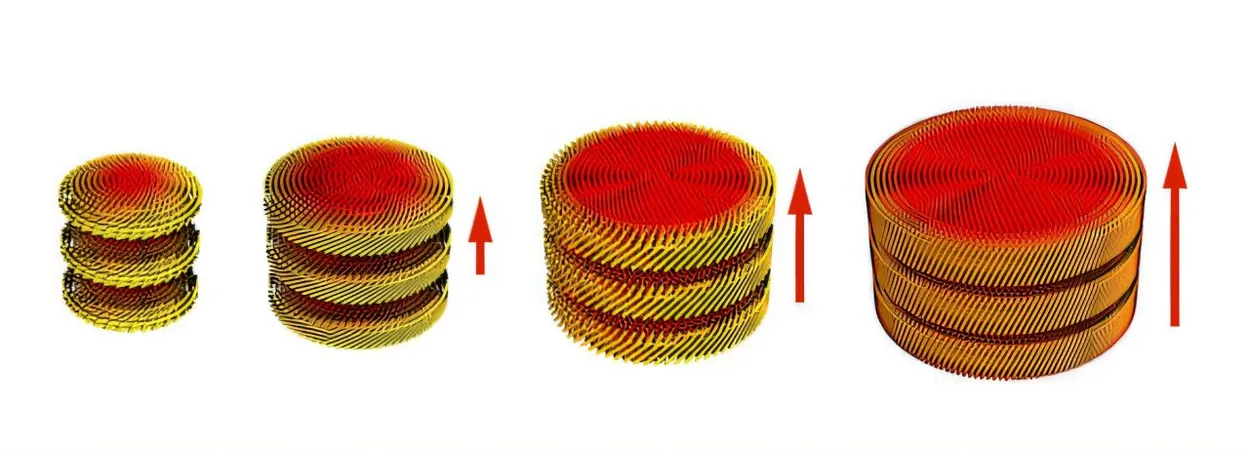
Groundbreaking Discovery: Researchers Use Magnetic Fields to Control Virus Assembly!
2025-03-31
Author: Liam
Groundbreaking Discovery: Researchers Use Magnetic Fields to Control Virus Assembly!
In a remarkable advancement in the field of nanotechnology, researchers from RIKEN have unveiled a method to control the self-assembly of rod-shaped viruses by applying magnetic fields. This innovative approach, published in the esteemed journal Nature Communications, could revolutionize artificial self-assembly processes, making them far more precise than current methods.
In nature, self-assembly is an incredibly efficient way for structures to form, resembling a bricklayer carefully placing each brick down. This process happens spontaneously in many biological systems, leading to highly organized structures with minimal waste. Traditional artificial self-assembly, however, often lacks this level of control, leading to various structures that can grow indefinitely without a specific endpoint. In nature, the protein shells of viruses, for instance, will stop growing once they reach a certain size—an aspect researchers are now attempting to mimic.
"Understanding how nature neutralizes unwanted growth in self-assembly processes is crucial," explains Yasuhiro Ishida from the RIKEN Center for Emergent Matter Science. "We are driven by the question of how these systems manage to maintain their size and shape effortlessly."
To explore this phenomenon, Ishida's team utilized rod-like viruses known for their unique ability to twist and pack together due to a property called chirality. Without a magnetic field, these viruses naturally accumulate a twist while self-assembling, determining their maximum size. However, when a magnetic field is applied, this twisting is minimized, allowing the resultant disk structures to grow larger than they would otherwise.
By varying the intensity of the magnetic field, researchers can finely tune the size of these disks. "What’s groundbreaking here is that this method surpasses natural systems by allowing us to manipulate the end size of the structures dynamically," remarked Ishida.
The discoveries did not stop there. In a stunning visual spectacle, the researchers observed that once the magnetic field was switched off, the disks began to unravel, creating beautiful corkscrew-like formations. "I was astounded when my students showed me the video of this unraveling," said Ishida, reflecting on the artistry of this phenomenon. "It was nothing short of mesmerizing."
The implications of this research could extend well beyond theoretical applications. The ability to manipulate viral structures with magnetic fields might pave the way for more effective drug delivery systems, advanced materials development, and innovations in biotechnology. As scientists continue to unravel the secrets of self-assembly in nature, technologies that capitalize on these principles could lead to exciting new breakthroughs that change how we understand and interact with biological systems.
Stay tuned as we follow the journey of these pioneering scientists, whose work is not just a step into the future of materials science, but a quantum leap towards harnessing nature’s own mechanisms for human benefit!









 Brasil (PT)
Brasil (PT)
 Canada (EN)
Canada (EN)
 Chile (ES)
Chile (ES)
 Česko (CS)
Česko (CS)
 대한민국 (KO)
대한민국 (KO)
 España (ES)
España (ES)
 France (FR)
France (FR)
 Hong Kong (EN)
Hong Kong (EN)
 Italia (IT)
Italia (IT)
 日本 (JA)
日本 (JA)
 Magyarország (HU)
Magyarország (HU)
 Norge (NO)
Norge (NO)
 Polska (PL)
Polska (PL)
 Schweiz (DE)
Schweiz (DE)
 Singapore (EN)
Singapore (EN)
 Sverige (SV)
Sverige (SV)
 Suomi (FI)
Suomi (FI)
 Türkiye (TR)
Türkiye (TR)
 الإمارات العربية المتحدة (AR)
الإمارات العربية المتحدة (AR)